Pasture Champions: Laura and Matt Elliott, Sandy Hill Farm, Cotswolds 2/2
What do you do to encourage this biodiversity and the lessons you have learned/would like to share?
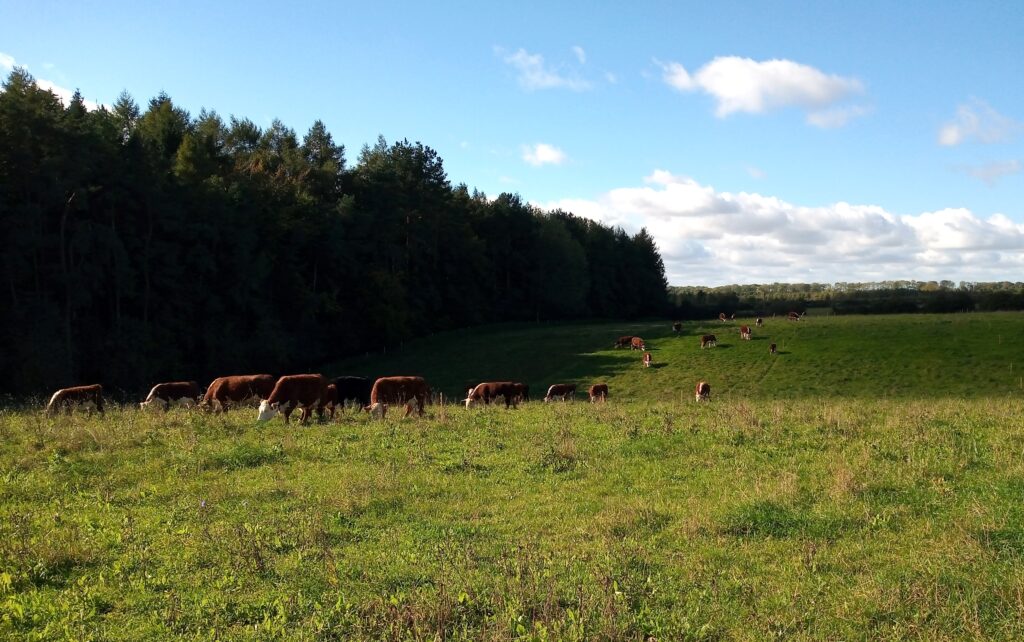 Mob Grazing
Mob Grazing
We are mob grazing (moving towards holistically planned grazing as Laura completes the Holistic Management Course) our cattle and moving them around the farm using electric fencing. We keep the cattle as one group – all the cows and calves, yearlings, steers and heifers.
It is not uncommon to see a cow with calves of different years all grazing together as a family unit. Our cattle are on daily moves in the growing season and we noticed the benefits of doing this almost immediately.
Firstly they are only ever on one very small part of the farm at any one time which means the remaining land is resting, regrowing and setting seed. Because the cattle are ‘mobbed up’, the stock density increases, meaning greater trampling activity – some of the pasture is trampled into the soil which increases our soil organic matter and helps to feed all the microorganisms and life there.
The cattle don’t have time to selectively graze out their favourite species, there is a much more even take of pasture which allows all species to thrive.
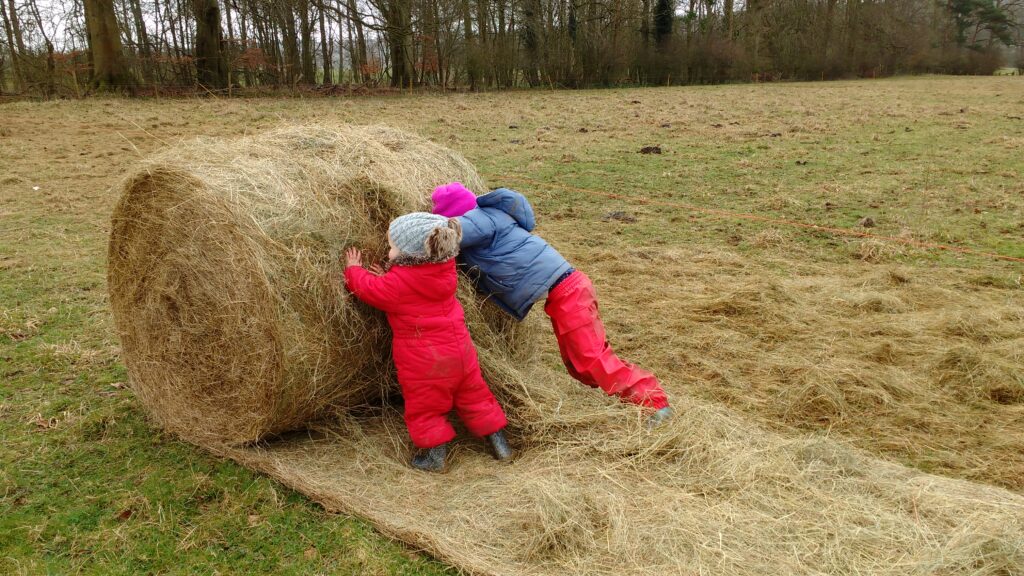 Bale Grazing
Bale Grazing
We outwinter our herd of cattle, they grow thick, fluffy winter coats and hold condition very well over the winter. We slow up the rotation during the winter – we allow them bigger paddocks and they might be in one paddock for 3-4 days. We then roll in round bales of hay to feed them. This we have found to be amazingly good for the soil – the extra trampling of any ‘wasted’ hay gets pushed into the soil, once again increasing soil organic matter.
By keeping our cattle out we know we are supporting the dung beetle population, which struggle on those warmer winter days when they will emerge, often to find no pats because of our housed winter stock.
We have bought in wildflower hay from neighbours and rolled this out in one field that previously hadn’t a lot of diversity. The next summer there were what looked like rolled out carpets of wildflowers including wild carrot, lady’s bedstraw, bird’s foot trefoil, self heal and knapweed – it was incredible to see the results of our actions so visibly!
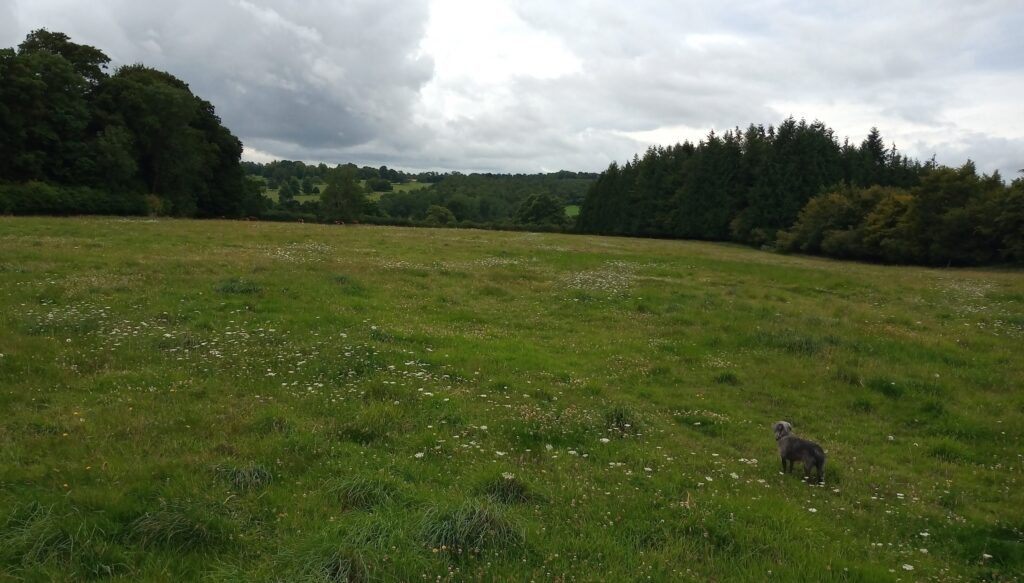 Flower strips post bale grazing
Flower strips post bale grazing
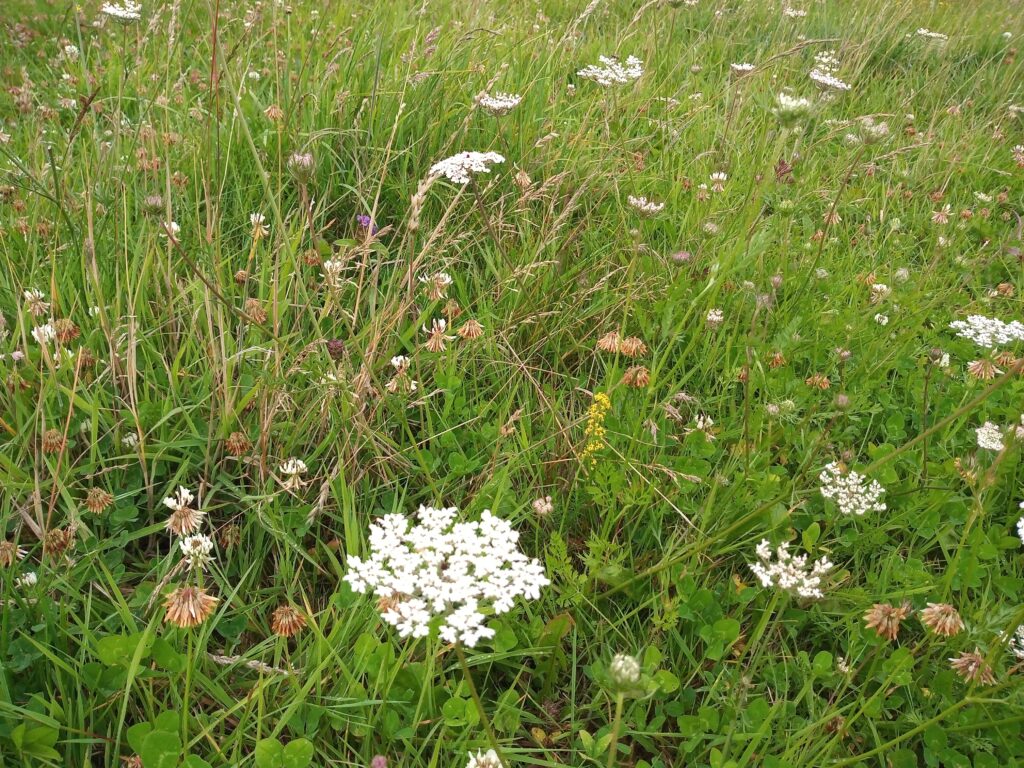 Flower strip up close
Flower strip up close
This last summer the same field hosted 3 species of orchids that we have never spotted previously – bee, pyramidal and Southern Marsh. The satisfaction this gives us, to know that we are helping improve the biodiversity above and below ground is so motivating, especially on those tougher days (eg, rolling a bale into sleet on a harsh February day!).
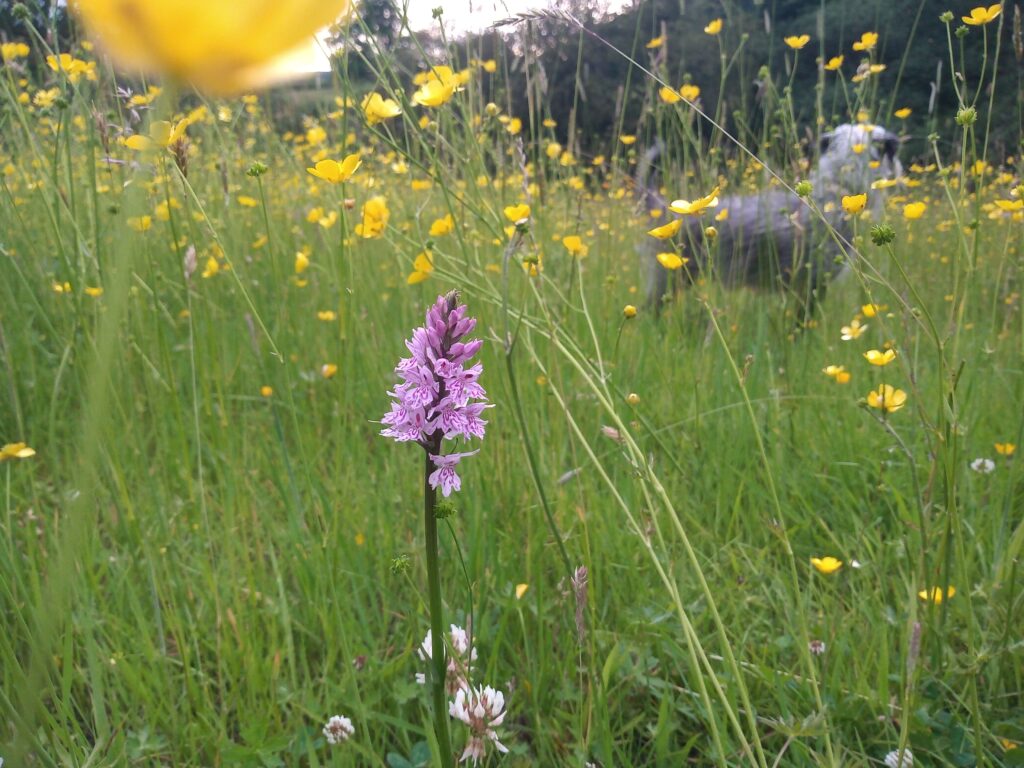 Orchid
Orchid
How it is connected across the farm and beyond?
We are fortunate to live in an area which is already rich in wildlife. Our farm is surrounded by a number of planted copses in amongst the fields which, whilst not part of the tenancy have an impact on the rest of the farm in terms of biodiversity, water flow and shelter.
Snipe have taken up residence in one field that hosts a wet flush; there’s usually a kestrel to be seen hovering over the unkempt margins along with barn owls and last winter a wonderful sighting of a short-eared owl.
A local birdwatcher confirmed that the flock of goldfinches dancing amongst the chicory seeds in winter numbered approximately 300. And it is difficult not to get excited seeing the local swallows swooping over the cattle on a summer’s evening helping to control the fly population.
What are the benefits to the farm?
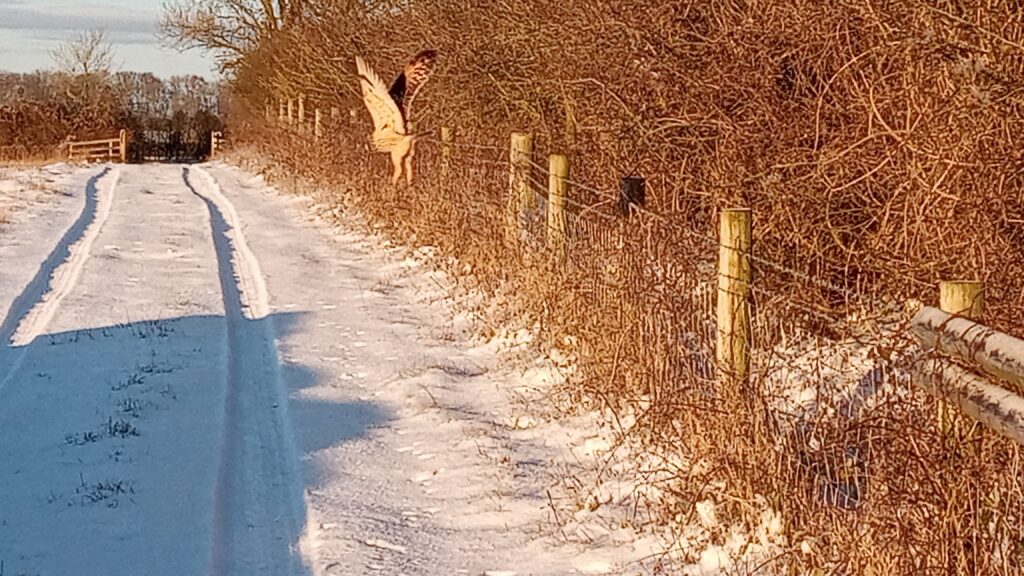 Short eared owl
Short eared owl
The benefits to the farm of this increase in biodiversity are hard for us to quantify in facts. We have found that by focusing on our grazing, essentially trying to capture as much sunlight via photosynthesis as we can, everything else starts to fall into place.
The soil is improving, our herbal leys are thickening up, we are noticing more diverse flowers and species appearing in the pastures, the insect life is increasing and therefore we are seeing more small mammals, foxes, badgers, fallow and roe deer, hares, birds, bats and even a common lizard!
This greater abundance feels healthy and the cattle benefit directly from this. Farming with nature feels exciting. You feel a part of something bigger, and most of all humble that mother nature knows best – she always has lessons to teach.
How do you monitor it?
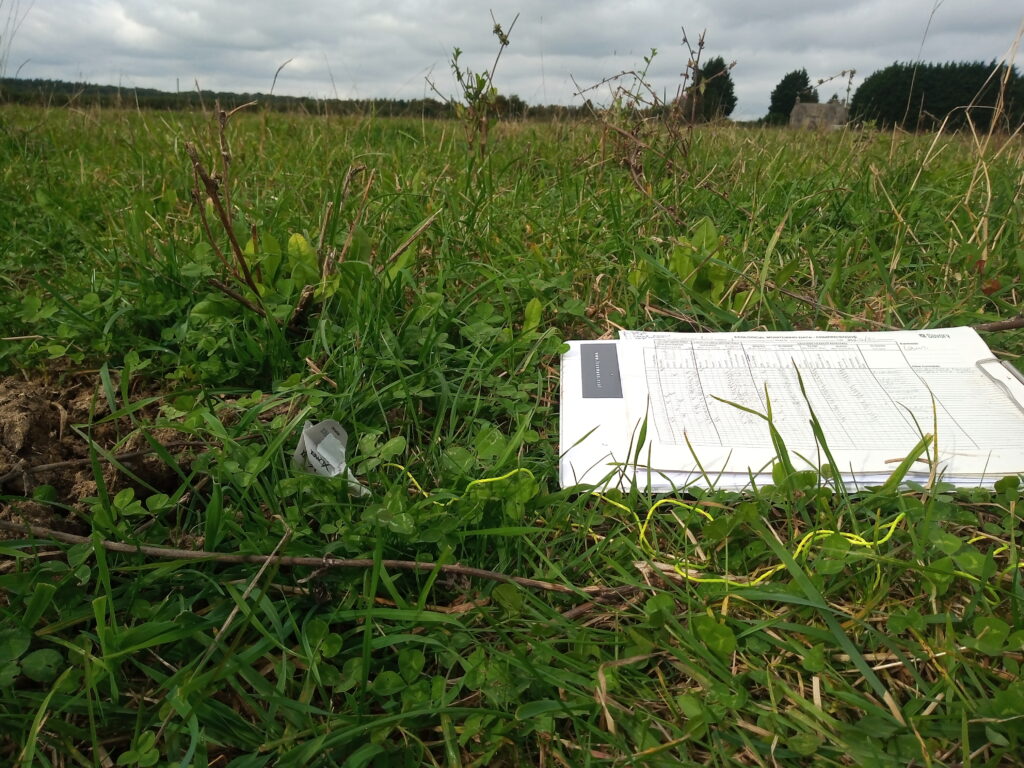 Ecological monitoring
Ecological monitoring
Monitoring is something that we admittedly need to spend more time on. The National Trust carried out some baseline surveys before we took on the farm which we will look to repeat in the next few years and it will be interesting to see if our feeling for how the farm has changed is backed up in evidence. We will start carrying out our own ecological monitoring which we are just learning how to do from next year.
What lessons have you learnt and would like to share with others?
As new entrant farmers, still finding our way and with plenty still to learn, we are finding it so encouraging to see the changes in biodiversity that have already come about in just 3 years.
The real excitement comes in being in the early stages of a transformation of a previously intensely managed farm, where we can only imagine what further changes we might see in the next 3 years (and beyond).
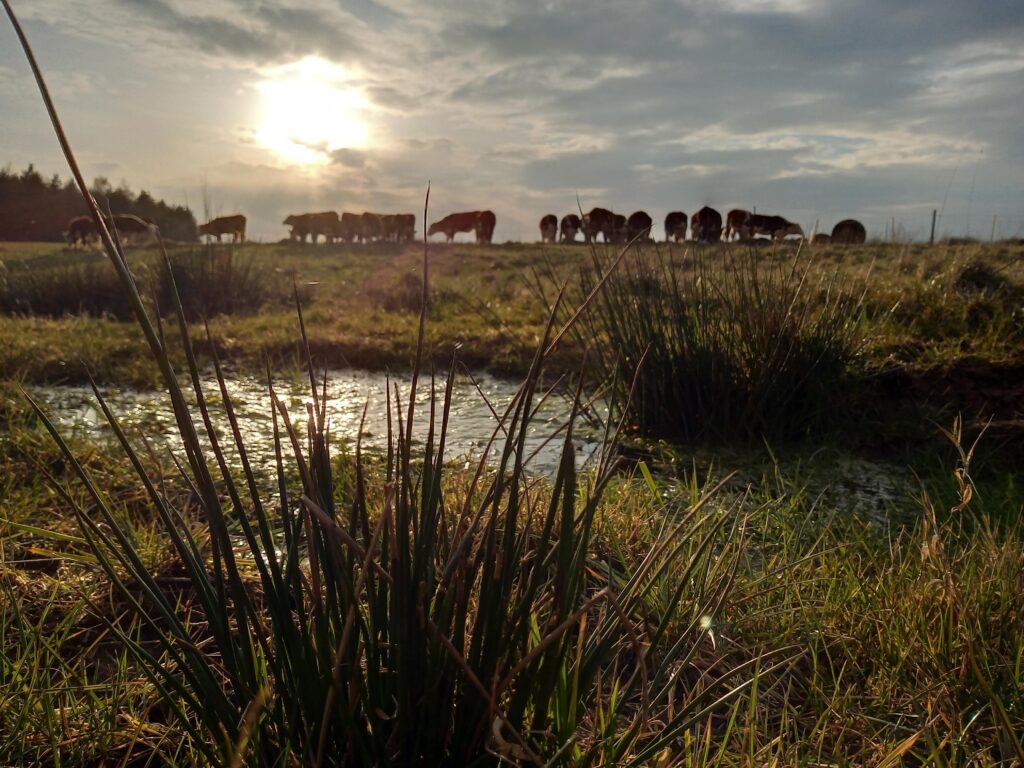 Contented cattle
Contented cattle
You can read more about The Sandy Hill Mob at www.sandyhillmob.co.uk or @sandyhillmob on Instagram & Twitter and @thesandyhillmob on Facebook



